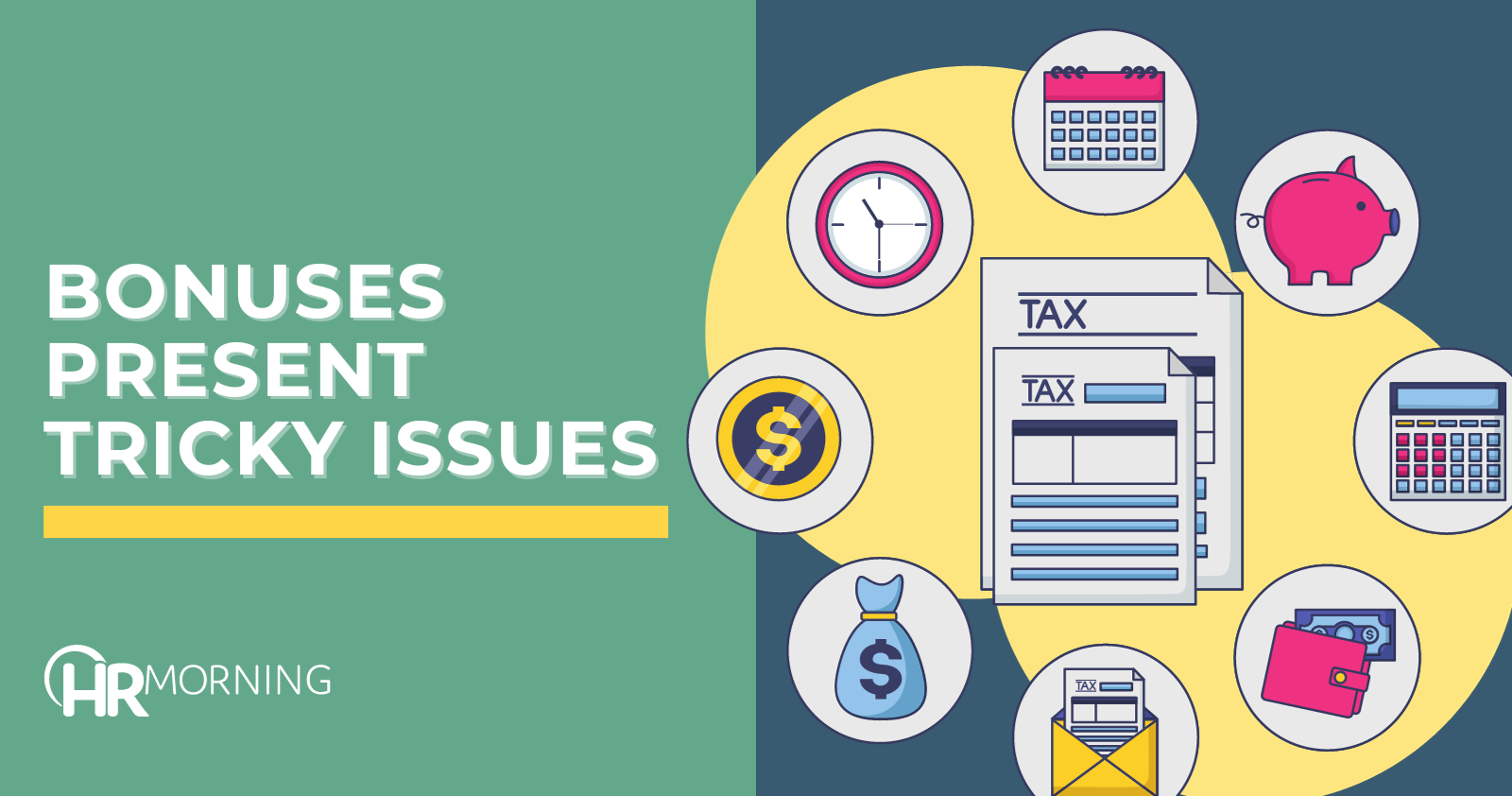When it comes to paying employees bonuses, some tricky questions arise.
What are the tax consequences of the bonus? How does the payment of a bonus affect overtime calculations? What if the bonus was discretionary?
This is a many-tentacled question, and we won’t explore every nook and cranny. But here is some general guidance for commonly encountered situations.
Bonuses and non-exempt employees
Let’s start with bonuses paid to non-exempt employees – those who must be paid an overtime rate of at least time and one-half their regular rate for all hours worked beyond 40 in a single workweek.
The amount of overtime due to these employees depends on their “regular rate of pay” for each particular workweek.
When a bonus is paid, it may need to be factored into the regular rate of pay – depending on whether the bonus was discretionary or non-discretionary.
If a bonus is discretionary, it can be excluded from the regular rate of pay. If it is not, it generally must be included in the non-exempt employee’s regular rate — meaning more overtime pay is due.
What’s the difference?
How can you tell if a bonus is discretionary or non-discretionary?
A bonus is discretionary only if:
- The employer has the sole discretion to award it and to determine its amount, and
- It is not the result of a prior agreement that causes the employee to expect it.
Some common examples of discretionary bonuses are referral bonuses and severance bonuses.
Bonuses that do not meet the test above are non-discretionary bonuses that must be factored into overtime pay. Some common examples are productivity bonuses and attendance bonuses.
OK, so now we know which bonuses must be factored into the overtime equation. But just how is the calculation done?
Here’s the method:
- First, add the amount of the bonus attributable to the workweek to the employee’s wages for the week. Example: The employee gets a biweekly bonus of $100. Of that, $50 is attributable to the workweek.
- Second, divide the total wages (including the weekly bonus amount) by the total number of hours worked for the week. This is the regular rate of pay for the week.
- Third, multiply the regular rate by 1.5 to get the overtime rate.
Let’s use an example.
Jeff is paid an hourly rate of $10 and receives a weekly production bonus of $100 in a week where he worked 50 hours. The bonus bumps his regular rate of pay for the week to $12 (600 divided by 50). This means he is owed $60 in overtime (10 hours times an extra $6 per hour) instead of $50 in overtime (10 hours times the normal increase of $5 per hour).
If a non-discretionary bonus is paid to an exempt employee, employers can count that bonus to satisfy up to 10% of the standard salary requirement. The payments must be made at least annually. If salary plus non-discretionary bonuses do not reach the required minimum, the employer must remedy the shortfall within one pay period.
What about taxes?
Employers can calculate tax on bonuses in one of two ways: the percentage method or the aggregate method.
When using the first method, the employer separates the bonus from regular wages and withholds at the rate of 22%. The bonus is counted as supplemental wages. If a bonus exceeds $1 million, the portion of the bonus beyond the first million is taxed at 37%.
When employers use the aggregate method, they count the bonus as part of the employee’s regular pay. If, for example, the employer normally withholds 28% of salary for income taxes, it should withhold 28% of the total bonus amount.
When paying bonuses, remember to account properly for taxes and make adjustments to overtime pay as needed.


